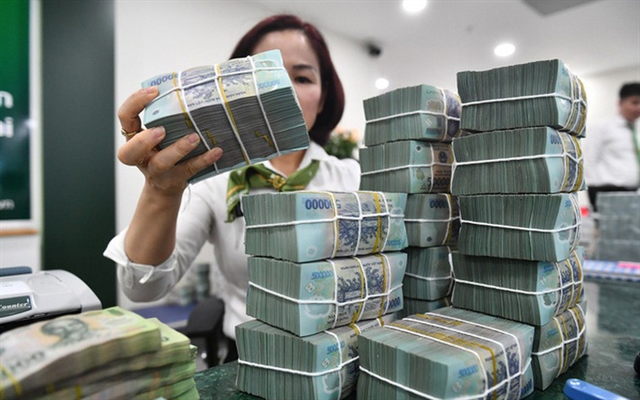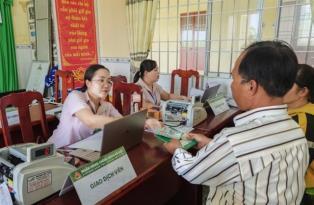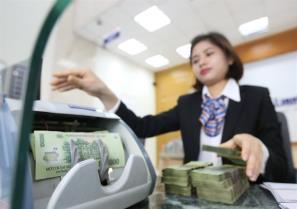HCM City’s credit growth rises 9 per cent as it boosts business support in year-end season
Credit growth has focused on key sectors such as wholesale and retail, manufacturing, accommodation and catering, transport, warehousing and construction.

HCM CITY — As HCM City’s economy continues to recover strongly, the banking sector is stepping up efforts to provide credit support and stimulate production and consumption in the final months of 2025 — a decisive period for completing annual growth targets.
According to Trần Thị Ngọc Liên, deputy director of the State Bank of Vietnam (SBV) – Region 2, total outstanding loans of credit institutions in the city were estimated at VNĐ4.8 quadrillion (US$189 billion) by the end of September, up 9 per cent compared to the end of 2024.
Credit growth has focused on key sectors such as wholesale and retail, manufacturing, accommodation and catering, transport, warehousing and construction — industries with strong capital demand as businesses expand operations and prepare for the high-consumption season.
Lending rates have been kept low to support recovery. In September, deposit rates in Vietnamese đồng slightly declined by 0.2–0.4 percentage points for short-term maturities, while long-term rates rose modestly by 0.1–0.4 points compared with late 2024.
Lending rates also decreased by 0.1–0.2 percentage points for short-term loans.
Total deposits mobilised by banks in the city increased by about 7.5 per cent, while outstanding loans rose by 9 per cent, reflecting stronger capital demand from businesses and consumers.
The city’s economy has shown consistent improvement. In the first nine months of 2025, the city’s GRDP expanded by 7.07 per cent, or 7.69 per cent excluding oil and gas, exceeding the 6.85 per cent growth rate from the same period last year.
According to SBV Region 2, 2025 marks a pivotal year in the city’s 2021–25 socio-economic development plan, as HCM City accelerates to meet key growth objectives.
The local banking sector is focusing on removing financing bottlenecks and guiding credit flows into productive areas.
A highlight of the year is the Bank–Enterprise Connection Programme, which continues to serve as a vital link between banks and the business community.
Eighteen commercial banks in the city have joined the programme with total commitments reaching VNĐ517 trillion ($20.3 billion) — the highest level so far.
As of September, disbursement reached VNĐ585.1 trillion ($22.9 billion) for 156,182 customers, equivalent to 113 per cent of initial pledges.
This reflects both proactive efforts from banks and rising credit demand as enterprises recover.
In the first nine months, the city’s banking sector held 17 business conferences and dialogues, including five loan-signing events worth more than VNĐ39 trillion ($1.52 billion) and 12 meetings to directly resolve credit issues for enterprises.
At the Việt Nam Bank for Agriculture and Rural Development (Agribank), local branches in HCM City organised several connection events, signing loans worth VNĐ3.99 trillion ($156 million) and supporting nearly 2,000 customers.

Agribank has disbursed VNĐ6.26 trillion ($244 million) under the programme, equal to 87 per cent of its registered credit package.
Meanwhile, SBV Region 2 has worked with other agencies to assist 45 businesses with urgent credit needs and resolve financing difficulties for another 52 cases, showing the banking sector’s active engagement and support for local enterprises.
The city aims to achieve economic growth above 8.5 per cent in this year, highlighting its determination to maintain a sustainable recovery.
Banking credit continues to be a key financial driver for production, investment and domestic consumption.
To reach these goals, the municipal banking sector is intensifying efforts to facilitate access to capital, promote preferential credit policies, encourage non-cash payments and strengthen coordination with departments and business associations to promptly address obstacles.
Liên said these regular efforts would be vital to ensuring businesses receive timely and effective financial support, contributing to overall economic stability and growth in the city’s final development phase of the year.
Experts believe the recent National Assembly approval of a resolution to establish International Financial Centres (IFCs) in the city and Đà Nẵng City, with special mechanisms and policies, will create new momentum for domestic and foreign investment.
The establishment of these IFCs is expected to boost production, consumption, exports and tourism while creating opportunities for banks and credit institutions to expand their customer base and develop high-quality financial services to meet rising investment demand in southern Việt Nam in the coming years. VNS





